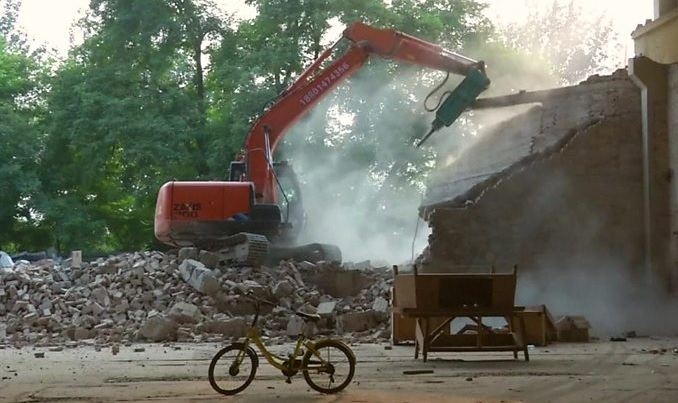Reviews & Articles
Despite demolition of studios, galleries the business of art continues
John BATTEN
at 2:49pm on 25th February 2019

Caption:
Demolition of Ai Weiwei''s Beijing studio, 2018. Photo copyright of Reuters.
(原文以英文發表,題為〈儘管工作室被拆,畫廊的藝術行銷仍在繼續〉。)
The demolition of one of Ai Weiwei’s Beijing studios, his Left & Right Studio, on 3 August 2018 raised the level of overseas disquiet about what this might mean for Beijing’s - and the mainland’s - art scene. The demolition of the studio was expected as the lease had expired, but its timing was without warning and earlier than had previously been given. The demolition appears to be part of Beijing’s continuing urban redevelopment, rather than payback for Ai’s taunting of the mainland’s strict clamp-down of freedom of expression under President Xi Jinping.
A number of factors are at play. The mainland recently announced a population cap for Beijing. Such an arbitrary edict is usual in mainland’s top-down approach to economic and social planning and an example of a bottom-line that a centrally-controlled demand economy can impose. Such sudden, broadly imposed government policies can be a surprise to foreigners, even those familiar with doing business in China. Consequently, the concurrent imposition of stricter residency rules, especially by restricting the sought-after hukou city residency permits, coincided with the demolition of unplanned, ‘pop-up’ villages, settlements and buildings on Beijing’s fringes and predominantly inhabited by immigrants from other provinces, many without a Beijing hukou permit. These workers usually work in low-wage service industries (cleaning, catering, domestic work etc.), jobs generally shunned by Beijing residents, but essential for Beijing to function. This latest sweep of gentrification targeting Beijing’s poorest has seen much outraged comment on mainland social media platforms.
Despite his self-imposed exile since 2015 in Berlin, Ai continues to maintain another studio in the Caochangdi arts district. His studio has not been affected, but other nearby galleries were suddenly served eviction notices pending demolition around the same time as Ai’s Left & Right Studio. de Sarthe Gallery was one of the affected galleries. It has had a gallery in Hong Kong since 2010 and its Beijing gallery opened in 2014. The Beijing gallery was served an eviction notice on 23 July 2018, and given one week to vacate its premises. The actual owner of the land is unknown, but it is rumoured to be land owned by China’s railway corporation and/or allocated for a fast-rail development project. The person ultimately receiving their rent is also unknown, but a middle-man acts on behalf of ‘the landlord’. Such opaque circumstances are not unusual in mainland land dealings!
Willem Molesworth of de Sarthe Gallery says that although the gallery was shocked with the suddenness of the eviction notice, they understood that it was also “the nature of doing business in Beijing.” He believed that Beijing authorities do not care about the consequences of such arbitrary evictions, because “they think that Beijing will always have a strong art scene.” Molesworth’s pragmatic acceptance of their gallery’s eviction is a typically stoic attitude that businesses have needed to bounce-back from arbitrary mainland actions since China first allowed foreign businesses to open in the early 1990s. Molesworth said that the gallery is now searching for a new location in which to re-open.
The shock of Ai Weiwei’s studio demolition is one of many blips seen during China’s gradually evolving business and art environment. However, Beijing continues, undiminished, hosting the presence of artists, galleries and overseas visitors and is increasingly the main source for domestic art collectors to buy art for their collections.
Of more immediate concern has been the possibility that Chinese art and antiques would be included in the Trump administration’s list of imports into the USA subject to increased tariffs. On 17 September 2018, accompanied by a huge sigh of relief from dealers, it was announced that Chinese art and antiques were not included in the list of 6,031 goods subject to increased tariffs.
The business of art continues in China – even in the face of forced gallery closures, studio demolitions and urban gentrification in Beijing and a pending Chinese-USA trade war!
This article was originally published in Design Anthology, Number 19, December 2018.
原文刊於 Design Anthology,2018年12月第19期 。
